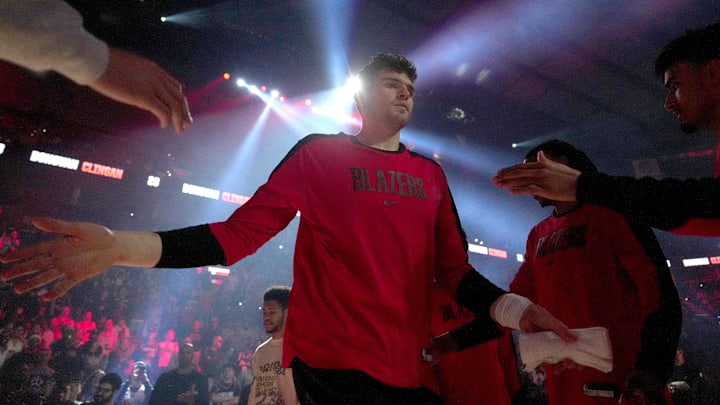The Portland Trail Blazers have doubled down on their well-documented intention to find a franchise center. Whether it's a case of keeping up with the trend of the modern NBA or a simple matter of prioritizing a key position, Portland has invested heavily in the 5-spot.
As hypothetical rotations take shape, however, there's one question that continues to burn: Who will receive the minutes at center?
Portland selected two-time NCAA champion Donovan Clingan at No. 7 overall in the 2024 NBA Draft. A year later, the Trail Blazers selected Yang Hansen at No. 16 overall in the 2025 NBA Draft, thus bringing the tally to two promising up-and-coming centers on the roster.
Parting ways with Deandre Ayton has cleared a path for both to receive playing time, but the presence of Robert Williams III continues to be a complicating factor.
There are few who would argue against the belief that Clingan and Hansen are the two long-term priorities. Williams is owed an expiring $13,285,713 for the 2025-26 season, however, and any attempt to trade him will likely require the Trail Blazers to let him audition for a new team—if they want to trade him at all.
Regardless of how Portland opts to proceed with Williams, minutes will need to be divided among three players—and there's reason to believe only two stand to receive significant opportunities.
Donovan Clingan, Yang Hansen, Robert Williams III: Who will play?
Clingan played 19.8 minutes per game as a rookie and should be in line for an uptick in playing time with Ayton out of the picture. The former Connecticut Huskies star averaged 6.5 points, 7.9 rebounds, 3.2 offensive boards, and 1.6 blocks during his limited playing time in 2024-25.
Those numbers translate to captivating averages of 11.9 points, 14.3 rebounds, 5.9 offensive boards, and 3.0 blocks per 36 minutes.
With the clear potential to dominate the offensive glass and defensive interior alike, Clingan should be pencilled in as a key contributor. It certainly seems to be trending that way after he started each of his final 27 appearances in 2024-25.
As for Hansen, the growing praise for his unlimited potential has many pondering if he could become the long-term starter once the dust has settled on his development—a future issue to resolve.
The question in the short term is whether an immediate distribution of minutes to Hansen is more important than maximizing Williams' trade value. The veteran has played a grand total of 61 games over the past three seasons, and the jury is thus out on what Portland could command in a trade.
Williams' expiring contract is certain to generate interest, but the return the Trail Blazers net for him could very well be decided by how much playing time he receives in 2025-26.
If Williams plays well, perhaps Portland could flip him for a first-round draft pick as desperate teams disregard their future for a February push for a title. It's happened countless times before and the Trail Blazers could thus strengthen their future by playing the long game.
The question is: Would it better to play Williams in hopes of convincing teams to give up draft compensation? Or should Portland be ready to explore Hansen's potential as soon as the opening tip?
That very question could determine the trajectory of the organization in 2025-26 and beyond.
